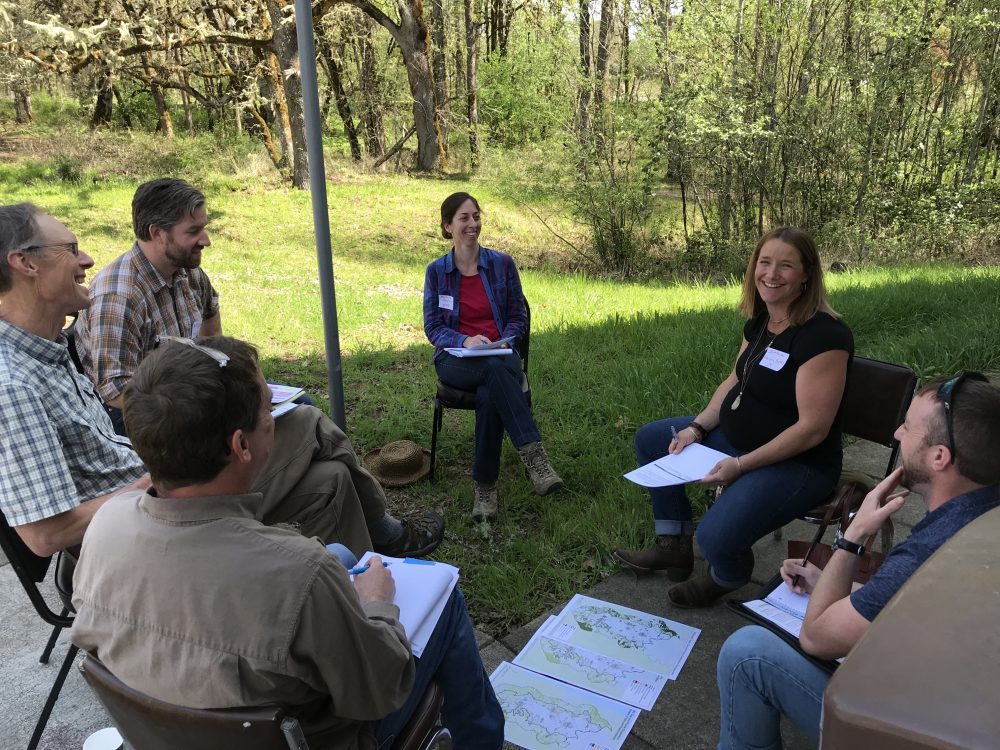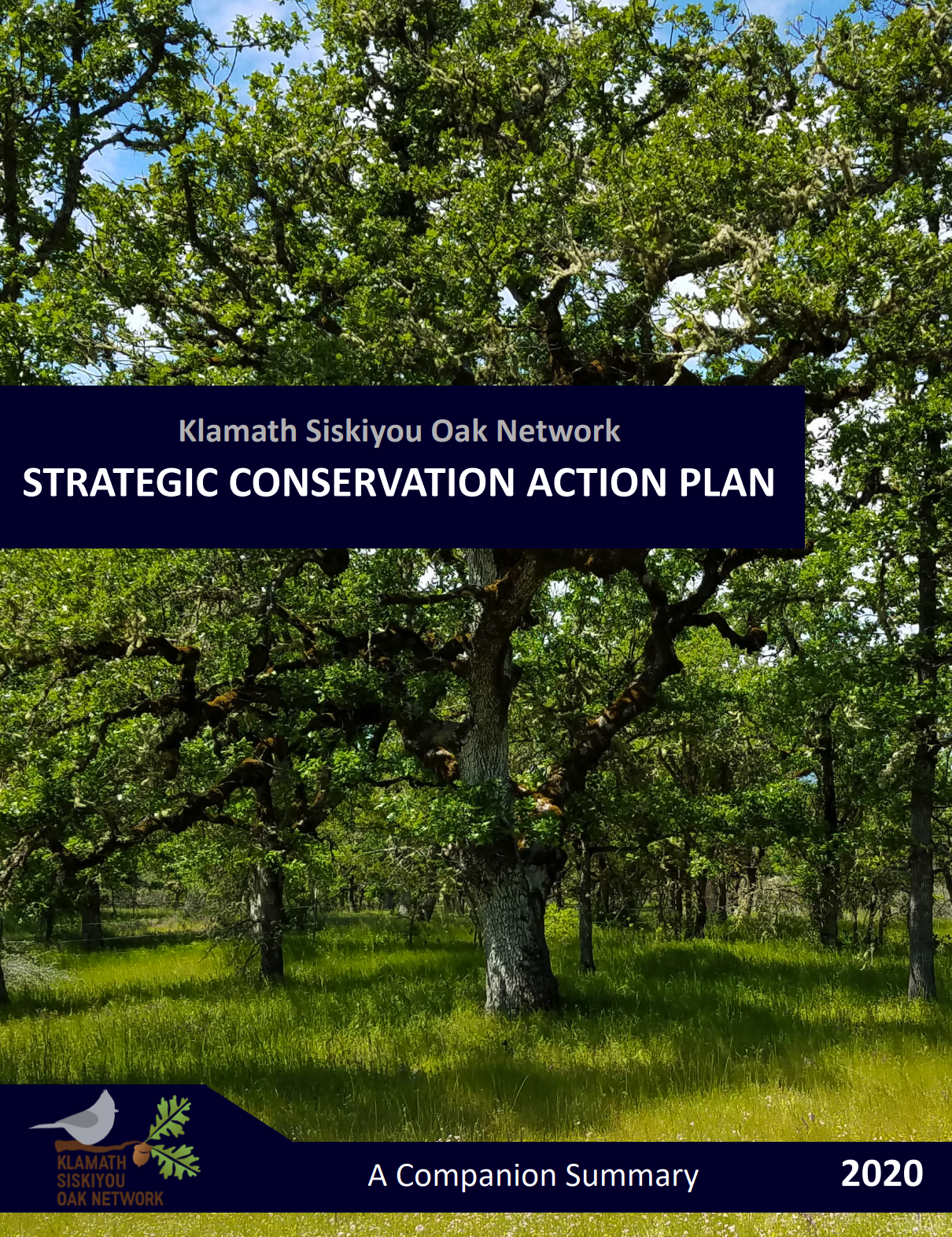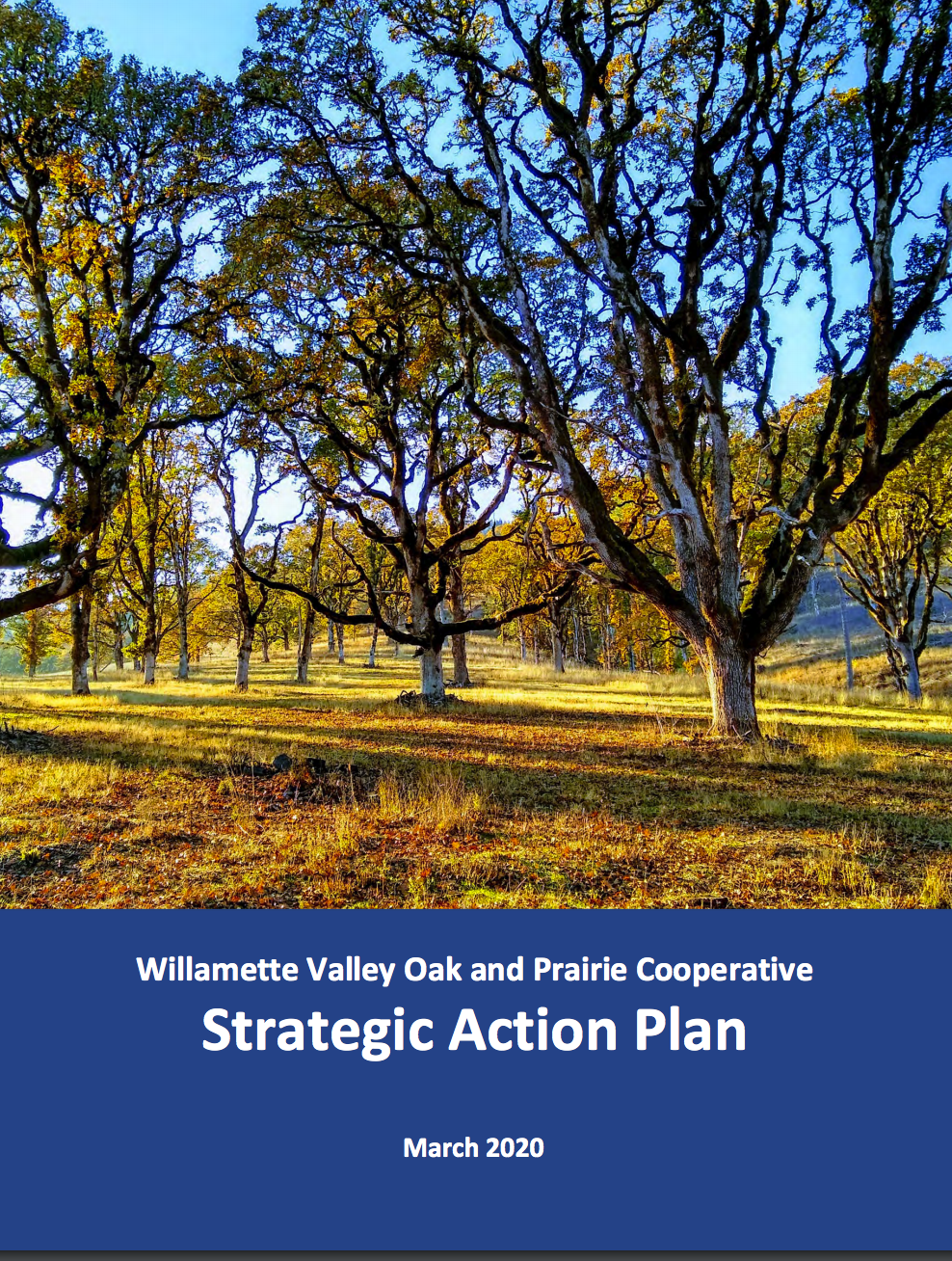Strategizing for Oaks
In the case of a recent strategic action plan published in June 2020 by the Klamath-Siskiyou Oak Network (KSON), it turns out to be a lot. The plan, developed over the past 3 years, includes overviews of the area's biogeography, history, and land status, and it emphasizes the importance of indigenous cultures and their land stewardship. It identifies and ranks threats to oak habitats and proposes strategies to directly address those threats. While some strategies are designed to increase KSON’s capacity and community support, other strategies focus on protecting and restoring oak habitat and offering additional technical assistance.
As it is increasingly important to be able to show our successes, KSON’s Strategic Action Plan prioritizes adaptive management. One way KSON will be tracking change related to restoration efforts is by looking at breeding birds. Bird species can be important ecological attributes and indicators of oak habitat health.
KSON partners have leveraged over 7.5 million dollars of public and private funding for oak restoration. This powerhouse of a group not only knows how to get on-the-ground conservation implemented, but can also hunker down and get planning done when needed. KSON always integrates bird populations and habitat needs into their planning, making birds not only an indicator of habitat health but also a driver of the planning process.
- John Alexander, Klamath Bird Observatory and Sara Evans-Peters, Pacific Birds
The Klamath Siskiyou is a diverse and rich landscape that spans parts of southwest Oregon and northern California. (Read the World Wildlife Fund’s description of the area.) KSON strives to promote “healthy and resilient oak ecosystems with intact ecological processes across much of their historic range in the Klamath Siskiyou Bioregion, including diverse landscapes with historic, intrinsic, aesthetic, environmental, wildlife, and economic values that are shared by a wide cross‐section of the public.”
The newly published Strategic Action Plan is a comprehensive, detailed and solution-focused plan to support that vision and serve as a regional roadmap for many years to come. You can learn more at the KSON partnership page at Klamath Bird Observatory, and download the entire 109-page plan. Or see the Summary document below.
Local and Regional Plans are Building Blocks for Landscape Resiliency
Long-term planning processes don't make for the most riveting news stories. In the end, however, a conservation plan allows for strategic projects with clear targets and goals. In the case of oak and prairie habitats, local and regional conservation plans will serve as building blocks for a more robust oak and prairie landscape across the Pacific Northwest. That larger landscape is important to both resident and migratory birds, amongst many other wildlife species.
As we featured in our August newsletter, the Willamette Valley Oak and Prairie Cooperative (WVOPC) also completed their plan in 2020, the Willamette Valley Oak and Prairie Cooperative Strategic Action Plan. The WVOPC plan, like KSON’s, includes an overview of the geographic, historical, biophysical, and social contexts of the area.
The Willamette Valley is a data-rich region, with large investments made over the years to map habitat types and prioritize areas for conservation. WVOPC used existing data and about 40 thoughtful minds to create a vision and suite of strategies that will guide oak and prairie conservation for the next thirty years.
Less than seven percent of the historic range of oak and less than one percent of prairie remain in the Willamette Valley so strategic actions are essential. As with KSON's plan, bringing partners together around shared ecological and social goals benefits not only native species, but the communities of people who rely upon and enjoy them.

Photo by Jeff Krueger


